Autumn trout fishing options aplenty and there’s still time to catch a prize-winning fish through end of this month; plus more possible razor clam digs and fishing options on horizon Leave a reply
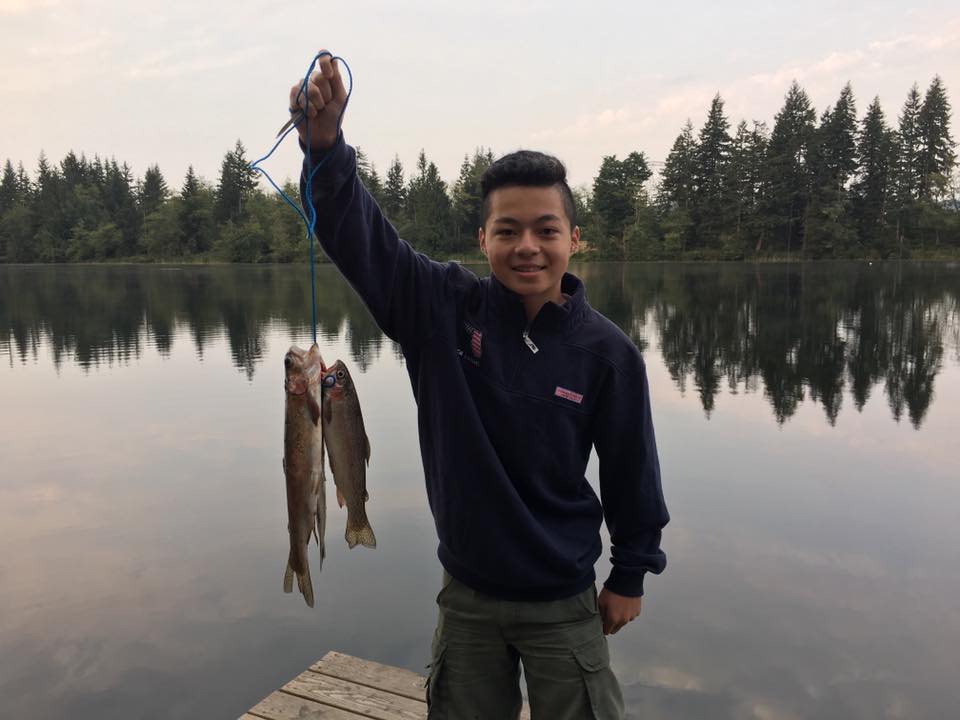
By Mark Yuasa
It’s that juncture of the year to grab a jar of dough bait, container of worms, a lure or spoon, and head to your favorite statewide lake.
“A lot of the lakes are still open for trout fishing through Oct. 31, and autumn is a great time to go out to catch some fish,” said Justin Spinelli, a Washington Department of Fish and Wildlife (WDFW) trout biologist. “The cooler, fall weather patterns should have the trout more active.”
In 2019, WDFW found ways despite a tight budget to raise thousands of rainbow trout in a few Puget Sound region hatcheries for an autumn fishery.
Lakes already planted between Oct. 1-7 are – Vance Creek Pond (adult), 200; Vance Creek Pond (juvenile only), 175 in Grays Harbor County. Gibbs, 650; and Teal, 350 in Jefferson County. Island, 400 (2,100 total); and Wye, 150 (400 total) in Kitsap County. Island, 250 (2,100 total); Spencer, 250 (5,400 total); Tee, 175; Trails End, 175 in Mason County.
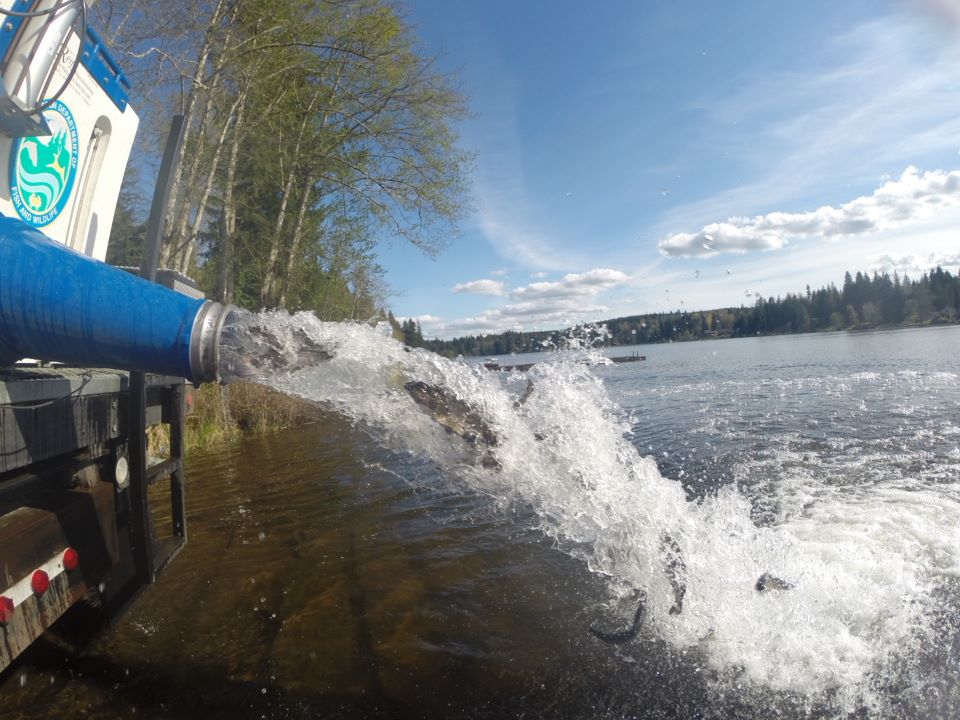
Additional plants of “jumbo” trout averaging 1 pound apiece will occur this month at Leland, 2,000 in Jefferson County. Kitsap, 4,760 in Kitsap County. Kokanee, 2,400; Lost, 2,100; and Nahwatzel, 4,600 in Mason County. Cases, 1,000; Black, 2,075; Snag, 200; and Western, 200 in Pacific County. American, 4,500 on Nov. 20; Bonney, 350; Bradley, 400; Harts, 550; and Kapowsin, 650 in Pierce County. St. Clair, 450; Long’s Pond, 200; and Munn, 1,275 in Thurston County.
Those heading to Eastern Washington should also pack along the trout gear as these lakes are planned for trout plants this month, and include Cow Lake, 5,000 in Adams County. Deep, 5,000; Lenice, 3,000; Billy Clapp, 36,950; Nunnally, 3,000; Martha, 1,000; Upper Caliche, 650; Soda, 5,750; and Corral, 4,350 in Grant County. Wapato, 5,000; and Frank’s Pond, 1,000 in Chelan County. Jameson, 10,000 in Douglas County.
The WDFW Statewide Trout Fishing Derby is happening through Oct. 31 and provide anglers an added incentive to get out and catch fish while having a chance to win a cool prize.
The derby – which began in late-spring – features more than 100 lakes planted with around 1,000 tagged trout and each provides a prize donated from more than 100 participating businesses totaling about $40,000.
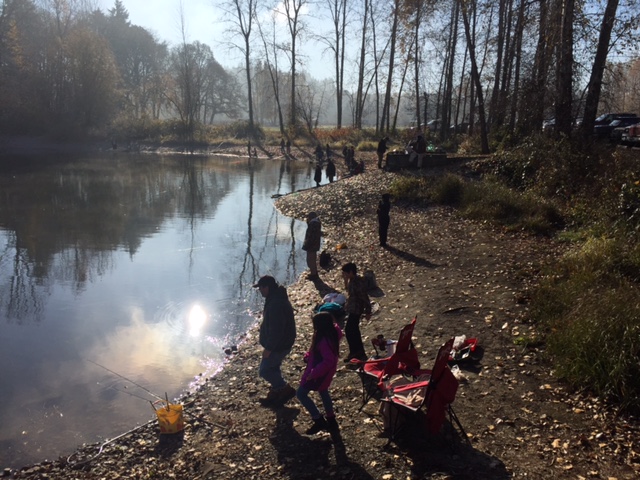
“So far out of 1,000 tags we’ve had 569 tags returned for prizes,” said Steve Caromile, the WDFW inland fish program manager. “The derby – held for the past six years – has worked out very well. Last year, we had 40 to 45 percent of the tags turned in for some nice prizes.”
To help boost chances of catching a tagged trout, WDFW has a list of all the lakes that have prizes still left in them and the total numbers of prizes and how many have already been given away.
In King County, Cottage still has four prizes waiting to be claimed as of Oct. 9; Echo has six; Green has seven; Margaret has four; Langlois has three; North has four; Steel has two; and Wilderness has seven. In Island County, Deer has five. In Pacific County, Black has seven; Cases has eight; Snag has one; and Western has one. In Skagit County, Erie has three; McMurray has two; and Sixteen has four. In Snohomish County, Ballinger has two; Bosworth has nine; Ki has four; Martha (Alderwood Manor) has three; Riley has three; Silver has nine; and Storm has four. In Thurston County, Clear has three; Deep has two; Offutt has two; Pattison has two; and Ward has two. In Whatcom County, Cain has three; Padden has five; and Silver has 11.
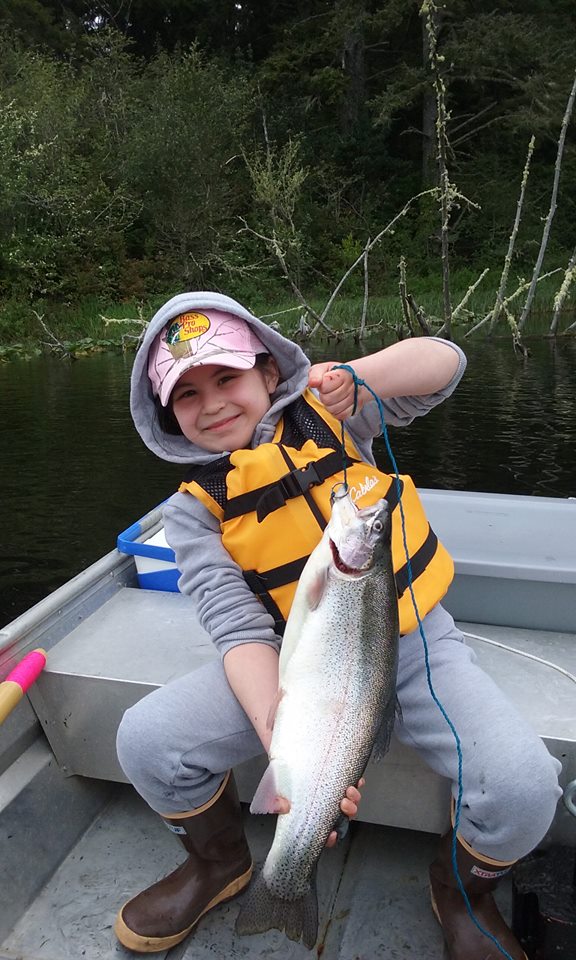
In Okanogan County, Alta has eight; Conconully Lake has five; Conconully Reservoir has seven; Pearrygin has three; Spectacle has 13; and Wannacut has six. In Pierce County, American has two; Silver has two; and Tanwax has two. In Pend Oreille County, Diamond has six. In Skamania County, Ice House has three; and Swift and Power Canal has one. In Spokane County, Badger has four; Bear has three; Clear has two; Fish has three; Liberty has five; and Williams has two. In Stevens County, Cedar has four; Loon has one; and Starvation has two. In Walla Walla County, Bennington has four; Hood Park has five; and Quarry has three. In Whitman County, Garfield has three. In Yakima County, I-82 Pond 4 has one; I-82 Pond 6 has two; Myron has one; and Rotary has two.
In Asotin County, Golf Course Pond has six. In Chelan County, Beehive has six; and Wapato has nine. In Clark County, Battle Ground Lake has two; Klineline has two; and Lacamas has four. In Columbia County, Blue has five; and Rainbow has two. In Cowlitz County, Horseshoe has three; Kress has two; Sacajawea has eight; and Silver has seven. In Douglas County, Jameson has seven. In Ferry County, Curlew has four. In Franklin County, Dalton has six. In Grant County, Corral has 12; Deep has 12; and Rainbow/Vic Meyers has six. In Grays Harbor County, Duck has two; Failor has one; Aberdeen has two; Sylvia has three; Vance Creek 1 has five; and Vance Creek 2 has one. In Jefferson County, Leland has three; and Silent has one. In Kittitas County, Easton has one; and Fiorito North has three. In Kitsap County, Horseshoe has five; Island has three; Kitsap has two; Mission has one; Panther has one; Tiger has three; and Wildcat has two. In Klickitat County, Horsethief has eight; Maryhill has five; Rowland has six; and Spearfish has four. In Lewis County, Carlisle has one; Fort Borst has one; Mineral has one; and South Lewis County Park Pond has one. In Lincoln County, Fishtrap has four. In Mason County, Benson has one; Clara/Don has two; Haven has two; Island has six; Lost has one; Nahwatzel has two; Panther has one; Spencer has three; Tiger has three; and Trails End has three.
Due to the pandemic, WDFW has created a new online system for anglers who catch tagged trout to report them. Depending on the prize they will either be mailed or picked up at WDFW regional offices by the recipient.
Anglers will also be able to share their derby success on social media with the hash tag of #watroutderby. For derby details, go to https://wdfw.wa.gov/fishing/contests/trout-derby. Before heading out the door be sure to check for lakes open/closed, regulations and trout plants
Nibble and bites
- The second marine toxin test results should come to light today (Monday, Oct. 12) that will hopefully give the green light to another series of coastal razor clam digs.
The next tentatively scheduled digs during evening low tides include a Halloween “trick or treat” dig on Oct. 16, 18, 20 and 31 at Long Beach, Twin Harbors and Mocrocks; and Oct. 17, 19 and 21 at Long Beach, Twin Harbors and Copalis.
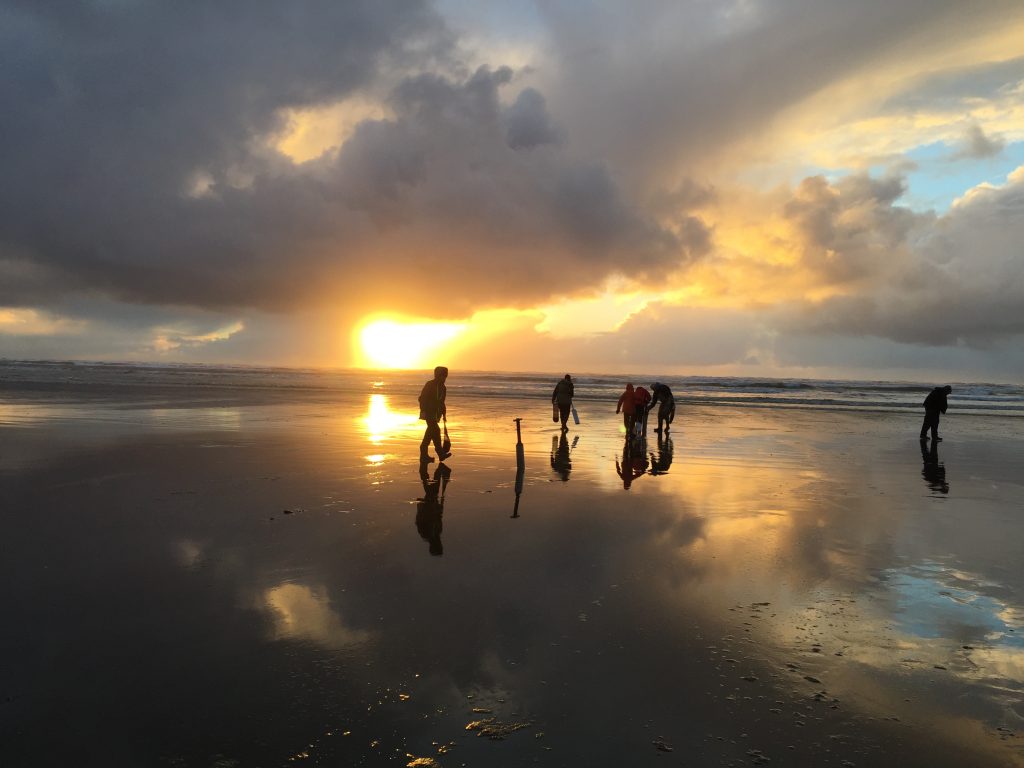
Success during the season opener on Sept. 16-22 saw a total of 30,403 diggers taking home 456,042 clams (doesn’t include 29,046 of clam wastage).
A breakdown of the success by beach – 12,134 at Long Beach Sept. 16-22 had 192,006 clams for 15.0 clams per person; 7,943 at Twin Harbors Sept. 16-22 had 119,150 for 15.0; 3,953 at Copalis on Sept. 16, 18, 20 and 22 had 59,302 for 15.0; and 6,372 on Sept. 17, 19 and 21 had 95,585 for 15.0.
In all WDFW approved an initial 39 digging dates for the 2020-2021 razor clam season on four coastal beaches through Dec. 31.
Other remaining tentative dates are: Nov. 2, 14, 16 and 18; Dec. 1, 3, 13, 15, 17, 28 and 30 at Long Beach, Twin Harbors and Copalis; and Nov. 1, 3, 13, 15, 17 and 19; Dec. 2, 4, 12, 14, 16, 18, 29 and 31 at Long Beach, Twin Harbors and Mocrocks.
Final approval of all dates above depends on marine toxin testing and are usually announced one to two weeks prior to each series of digs. WDFW keeps close tabs on marine toxins such as domoic acid – a natural toxin produced by certain types of marine algae – which can be harmful or even fatal if consumed in enough quantities.
The latest samples from the Department of Health labs showed domoic acid levels remained well under the 20 parts-per-million (ppm) cutoff and ranged between 2 and 5 ppm on all four beaches.
Digging is also contingent upon continued guidance by public health officials monitoring COVID-19 in coastal communities. For WDFW COVID-19 updates, go to https://wdfw.wa.gov/about/covid-19-updates.
Summer assessments showed some of the highest razor clam populations seen in more than two decades.
Long Beach has 24.8-million recruit-size razor clams and a total allowable catch (TAC) of 9.9-million for the 2020-2021 season, which is up from 5.2-million in 2019-2020. At Twin Harbors it was 5.2-million with a TAC of 2.1-million up from 1.8-million; Copalis was 11.8-million with 4.7-million up from 4.2-million; and Mocrocks was 11.6-million with 4.6-million up from 3.3-million.
For more on razor clams, go to http://wdfw.wa.gov/fishing/shellfish/razorclams/.
- The eastside of Whidbey Island (Marine Catch Areas 8-1 and 8-2) join several other Puget Sound areas that are now open daily through Dec. 31 for winter Dungeness crab fishing including the Strait of Juan de Fuca (Marine Catch Areas 4 east of Bonilla-Tatoosh line, and 5 and 6); San Juan Islands (7); northern Puget Sound (9) and Hood Canal north of Ayock Point (12). All other areas are closed this winter.
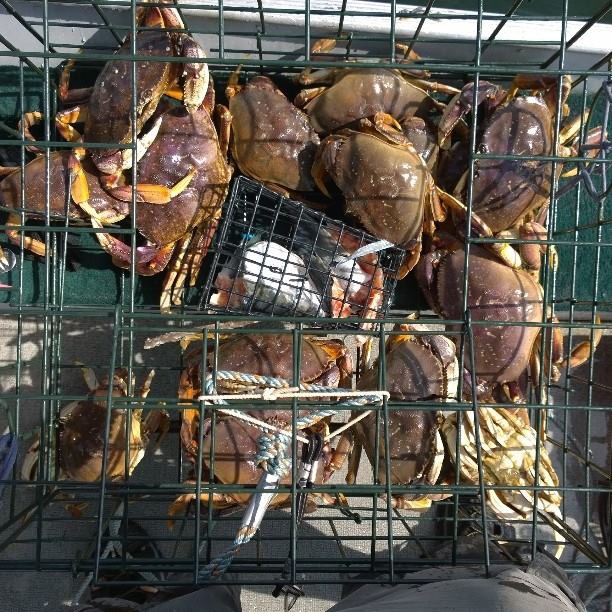
Crab pots may be set or pulled from a vessel from one hour before official sunrise through one hour after official sunset. Daily limit is five Dungeness crabs (males only) in hard-shell condition with a minimum carapace width of 6 1/4 inches. Crabbers may also keep six red rock crabs of either sex per day with a minimum carapace width of 5 inches, and six Tanner crabs of either sex with a minimum carapace of 4 1/2 inches. Anglers must also possess a winter crab catch card.
In 2019, the summer and winter Puget Sound sport Dungeness crab fishery landed 1,660,752 pounds (compared to 1,585,956 in 2018 and 1,764,633 in 2017). Summer generates the highest participation level with an average of 192,798 catch cards issued compared to 23,578 during the winter fishery.
For updates on crabbing, go to https://wdfw.wa.gov/fishing/shellfishing-regulations/crab.
- The Puget Sound coho salmon fishing season has cooled off with some action still happening off West Point south of Shilshole Bay, in front of the Shilshole Marina breakwater, Elliott Bay, Meadow Point north to Richmond Beach, Jefferson Head and Point Monroe.
Central Puget Sound is open for silvers through Nov. 15; south-central Puget Sound from Vashon Island south to Narrows Bridge is open until Oct. 31; Hood Canal is open until Nov. 30; and the Dungeness Bay terminal fishery is open through Oct. 31. Southern Puget Sound is open year-round for hatchery-marked coho and/or chinook only.
Down on the coast, the eastern portion of Grays Harbor east of Buoy 13 is open through Nov. 30, and produces some of the bigger silvers in our state with good fishing right up to the Thanksgiving timeframe.
Some west side rivers are open for salmon fishing and anglers should consult with the WDFW regulation pamphlet or go to their website at https://wdfw.wa.gov/ to see what is open or closed.
- Fall chinook fishing is winding down in the Hanford Reach of the Upper Columbia River, and here is the latest fishing report from Paul Hoffarth, a WDFW biologist in Pasco:

Effort and harvest declined in the Hanford Reach on the Upper Columbia River, which is very unusual for this fishery that is normally peaking at this time. Boats averaged slightly less than a salmon per boat, 18 hours per fish. Bank anglers at Ringold also averaged 18 hours per salmon. This will be the final weekend to fish the Hanford Reach upstream of the old Hanford townsite. The fishery is open through Oct. 15. The lower section will remain open through Oct. 31.
WDFW staff interviewed anglers from 878 boats (2,277 anglers) and 134 bank anglers (Ringold Springs access) with a combined harvest of 745 adult chinook, 64 jacks, and 9 coho. Based on the sampling information, an estimated 2,235 adult chinook, 187 chinook jacks, and 27 coho were harvested from 7,142 angler trips. For the season, there have been 29,653 angler trips.
Roughly less than a 1,000 to more than 3,000 adult fall chinook per day continue to pass through Bonneville (season total through Oct. 10 is 382,796) and McNary (173,307) dams. The third in-season return for the Hanford Reach fall chinook population was completed last week. Current estimate is 70,920 natural (wild) fall chinook to return to the Hanford Reach, up 9% from the pre-season forecast of 65,359 adults. At 71,000 adults, there will be sufficient numbers of fall chinook allocated to the sport fishery to continue the fishery with a two-adult daily limit.
The lower Hanford Reach, Interstate 182 at Richland upstream to the old Hanford townsite powerline crossing, is open for Ringold Springs Hatchery (RSH) steelhead. Anglers are limited to one RSH steelhead daily. Ringold Springs steelhead are adipose clipped and right ventral fin clipped. All other hatchery and wild steelhead must be immediately released. No steelhead were harvested this past week in the Hanford Reach.

